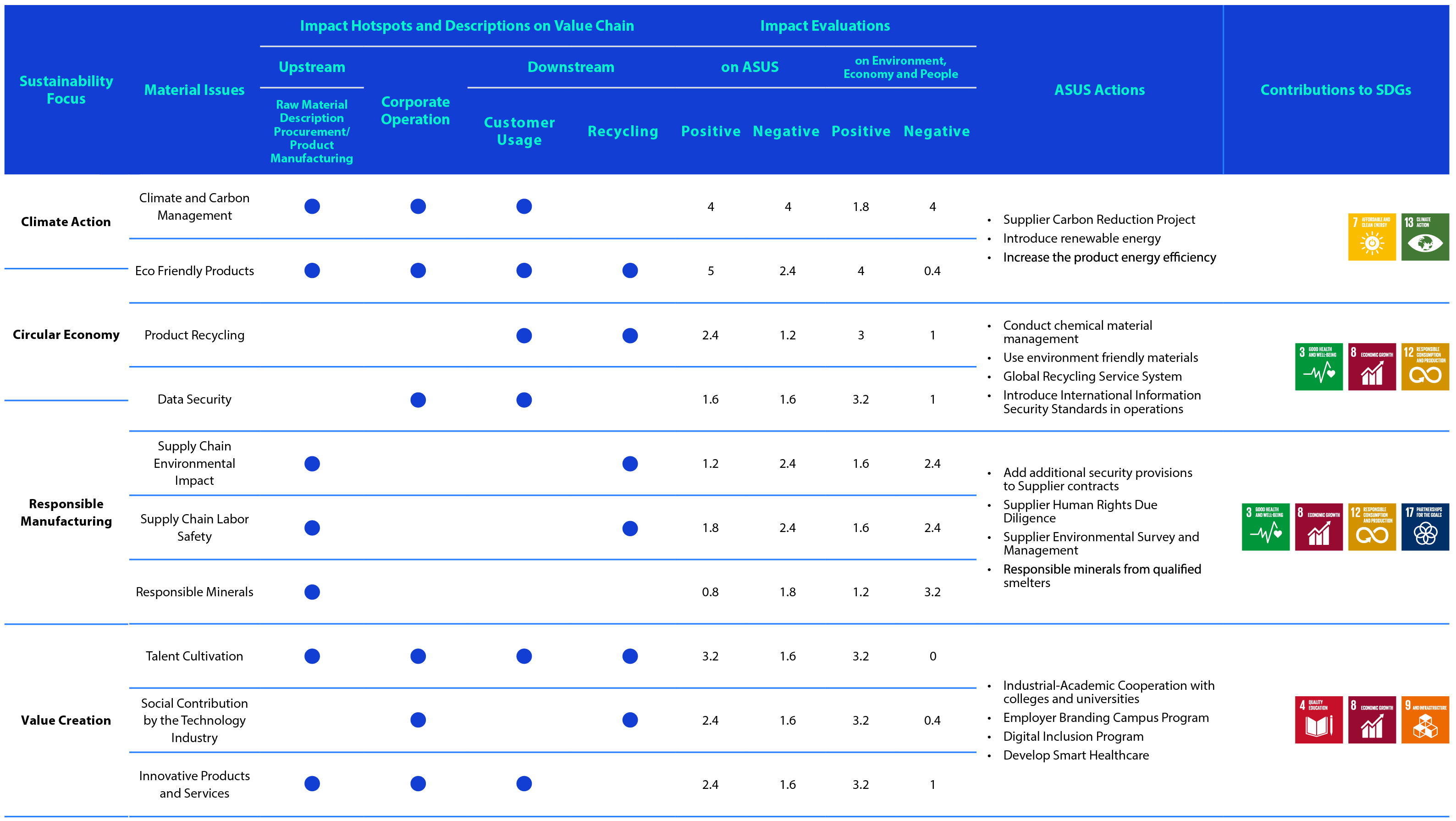Materiality Analysis | Philosophy | ASUS ESG website, ASUS ESG goal
The Assesment Process
Identification
Stakeholders
Understand the expectations and concerns of stakeholders through regular and irregular exchanges and interactions.
Sustainability Issues
Sustainability standards and reporting framework, peer concerns, responsible investment ratings, environmental label speci cations, risk trends, SDGs, etc.
Extracted 24 topics to investigate the level of impact.

Impact Evaluation
Evaluate the impact of sustainability topics on ASUS
Senior Manager Questionnaire
Evaluate the impact of topics on external environment, economy and people
Stakeholder Questionnaire
Impact index
Calculated by Sustainability Team
349 Stakeholder Questionnaires, 11 Senior Manager Questionnaires

Validation of Materiality
The sustainable team compiles the impact degree of the issue and impact index
Validation of 10 highly material topics

Regular Reviews
Establish management policies and objectives for highly material topics.
Review the of goals progress on a Quarterly basis
Stakeholders Engagement
ASUS identified stakeholders with major influences on ASUS, including seven stakeholder categories of employees, customers, supply chain, and business partners, investors, governments and NGOs, academic units and society (i.e., community and media). Through diverse channels, we carry out exchanges and engagements regularly and from time to time to understand stakeholders' expectations, and, at the same time, the information sources are used for evaluations of sustainability topics and impacts:
Materiality Metric
Impact of Material Issues
For material issues, ASUS has established its management policies and formulated action plans and set targets and indexes based on the digitalized measurement strategies to periodically track the achievements. For other issues that are not material, we disclose existing management procedures and measures for stakeholders to understand the overall sustainability achievements of ASUS.



